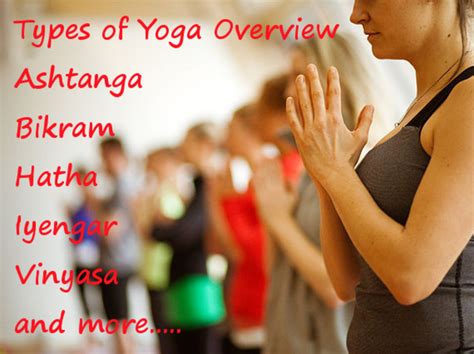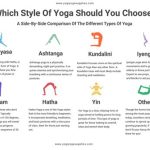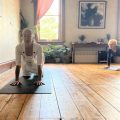Choosing the Right Yoga Practice: A Comprehensive Comparison of 6 Popular Styles
Yoga has evolved into a global phenomenon, offering a wide variety of practices for people with different needs, goals, and physical abilities. But with so many styles—each claiming distinct benefits—how do you choose the one that fits your personal journey? This article dives deep into six of the most popular yoga styles, comparing them across multiple dimensions: tradition, technique, modern application, accessibility, and physical/mental impact. By understanding the nuances of each, you can select the most suitable practice for your unique lifestyle.
Key Concepts in Yoga Styles
- Mind-Body Connection: All yoga styles emphasize alignment between physical movement, breath control, and mental focus.
- Asana (Postures): Different styles place varying levels of importance on the technical execution of postures.
- Pranayama (Breath Control): Breath plays a crucial role in all styles, but methods of control differ significantly.
- Intent: Some practices aim for relaxation or meditation, while others focus on strength, flexibility, or cardiovascular health.
Historical Context of Yoga and Its Evolution
Yoga originated in ancient India over 5,000 years ago, rooted in the Vedas and Upanishads. It began as a spiritual practice focused on attaining enlightenment through self-discipline and meditation. Over time, physical postures (asanas) and breath control (pranayama) became central components of yoga. The 20th century saw the proliferation of distinct styles as yoga spread globally, shaped by different masters and tailored to modern needs, such as fitness and stress relief.
| Yoga Style | Founder/Influence | Primary Focus | Key Characteristics |
|---|---|---|---|
| Hatha Yoga | Ancient tradition; modern form popularized by Swami Sivananda | Balance of body and mind | Slow-paced, basic postures with breath control and relaxation |
| Vinyasa Yoga | Influenced by Ashtanga; modernized by various instructors | Flow and synchronization of movement with breath | Dynamic sequences; no fixed routine; energizing practice |
| Ashtanga Yoga | Founded by Pattabhi Jois | Strength, flexibility, and discipline | Structured sequences; physically demanding; focus on breath |
| Iyengar Yoga | Founded by B.K.S. Iyengar | Alignment and precision | Use of props; slow, deliberate postures; therapeutic benefits |
| Kundalini Yoga | Yogi Bhajan brought it to the West | Awakening spiritual energy | Focus on chanting, meditation, and breathing techniques |
| Restorative Yoga | Based on Iyengar principles | Deep relaxation and recovery | Long holds; use of props; promotes mental and physical healing |
Current State of Popular Yoga Practices
In today’s world, yoga is not limited to spiritual pursuit; it is also a mainstream tool for fitness, mental wellness, and social interaction. While some yoga styles remain faithful to ancient traditions, others have evolved to meet modern demands for physical intensity, accessibility, or specialized therapeutic benefits. This section explores how each style fits into current lifestyles and demographics.
- Hatha Yoga: Popular among beginners for its gentle pace and focus on fundamentals.
- Vinyasa Yoga: Favored by those seeking an energizing, sweat-inducing workout.
- Ashtanga Yoga: Attracts dedicated practitioners who thrive on structure and discipline.
- Iyengar Yoga: Commonly used in rehabilitation settings due to its precise and careful alignment.
- Kundalini Yoga: Draws people interested in spirituality, meditation, and breathwork.
- Restorative Yoga: Ideal for stress relief, recovery, and managing chronic conditions.
Practical Applications of Yoga Styles
The choice of a yoga style depends heavily on personal goals. Below, we offer specific recommendations for different needs:
| Goal | Recommended Style | Reason |
|---|---|---|
| Improving flexibility | Hatha or Vinyasa | Slow stretches and flowing sequences improve range of motion |
| Building strength | Ashtanga or Iyengar | Demanding postures and muscle engagement |
| Stress relief | Restorative or Kundalini | Focus on relaxation, breath, and mindfulness |
| Weight management | Vinyasa | High-intensity, calorie-burning sequences |
| Chronic pain management | Iyengar or Restorative | Gentle, supportive postures suitable for recovery |
Case Studies
Case 1: Vinyasa Yoga for Mental Health
A 2022 study found that participants practicing Vinyasa yoga for 12 weeks reported a 32% reduction in anxiety symptoms.
Case 2: Iyengar Yoga in Physical Rehabilitation
A clinical trial demonstrated that patients recovering from knee surgery showed faster recovery times with Iyengar yoga compared to standard physical therapy.
Stakeholder Analysis
The stakeholders in yoga’s ecosystem include instructors, fitness centers, practitioners, wellness brands, and even healthcare providers. Instructors must balance tradition with innovation. Fitness centers focus on marketability, while wellness brands leverage yoga’s popularity to sell products. Healthcare providers increasingly view yoga as complementary therapy.
Implementation Guidelines
To integrate yoga effectively into daily life or institutions:
- Set clear personal or institutional goals (e.g., stress management, fitness).
- Choose a certified instructor for safety and proper guidance.
- Combine yoga with other wellness practices for holistic benefits.
Ethical Considerations
As yoga grows globally, ethical concerns arise regarding cultural appropriation, commercialization, and inclusivity. Practitioners and instructors are encouraged to honor yoga’s roots, maintain authenticity, and foster inclusive environments.
Limitations and Future Research
Despite the benefits of yoga, challenges remain. Research on the long-term impact of various styles is still limited. Some practices may not be suitable for individuals with certain health conditions, highlighting the need for medical guidance. Future research should focus on developing standardized practices for therapeutic use and exploring the impact of yoga in diverse populations.
Expert Commentary
Ultimately, choosing the right yoga style depends on individual goals and preferences. Whether seeking physical fitness, mental clarity, or spiritual growth, there is a practice suited for everyone. As yoga continues to evolve, it offers endless opportunities to explore mind-body connections and personal transformation.








